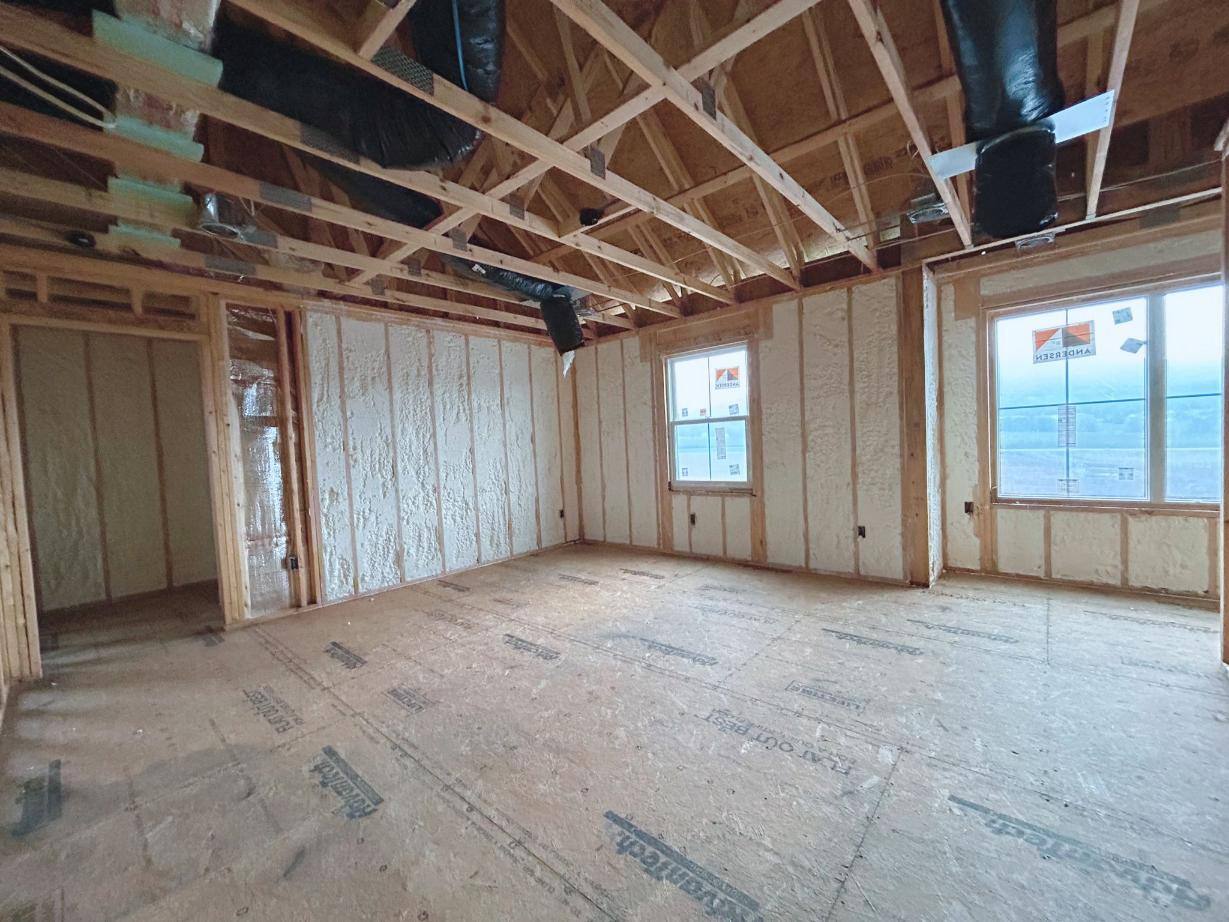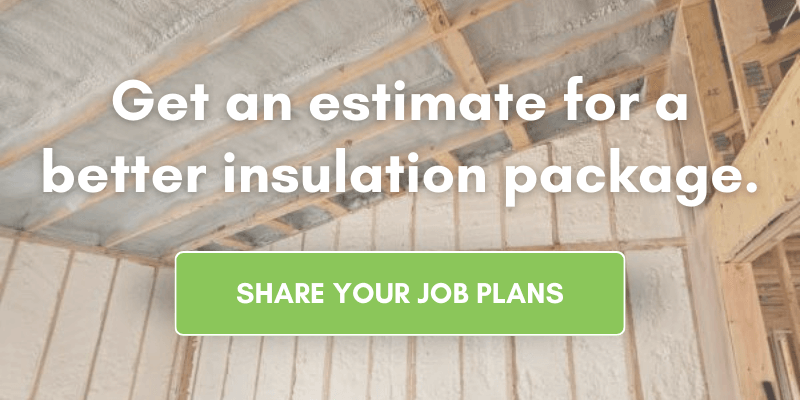
If you're like most general contractors, you cannot justify using premium insulation in your builds. Keeping within budget is hard enough without spending on insulation like spray foam. Fiberglass batt insulation has been a staple of our industry for decades. If it ain't broke, don't fix it, right?
We want to challenge you to consider the value of a pricier insulation package. Yes, there will be a higher upfront cost. As a professional insulation contractor, we have seen many instances of basic insulation packages failing the home.
Let's look at the main reasons why we strongly recommend better insulation packages, and you can decide for yourself.
Budget-Friendly Insulation Packages Often Fail.
In some circumstances, the difference between insulation packages is mediocre performance and excellent performance. The home might not need excellence, so average insulation will work. However, in some builds and applications, the difference between these insulation packages is whether there is any performance at all.
How can you know when budget insulation offers reasonable performance? Let's examine the top 3 places where we see insulation failures in new homes.
Some Types Of Builds Are More Prone To Air Leakage.
Due to the nature of construction, some build styles are more forgiving than others. Depending on the style of home you're building, detail work becomes more or less critical.
A popular construction type around Greencastle is the Cape Cod. Cape Cod homes are less lenient with this detail work. Compared to a traditional build, a Cape Cod has more chances for air leakage.
However, the risk of problematic air leakage isn't restricted to Cape Cod constructions. Plenty of build elements can open the home up to energy inefficiencies. A classic example is rooms above attached garages. These are often built into the roof system, leaving them vulnerable to air infiltration.
The more uncontrolled air infiltration, the less likely a home will pass its blower door test at the end of construction. As building codes and concerns have become increasingly concerned about energy efficiency, air exchange has to be taken seriously.
If you install batt insulation in the exterior of a Cape Cod, it will face excessive air leakage. Failure to properly air-seal the cracks and crevices of the Cape Cod style and similar types of construction has a detrimental effect on the life of the structure.
Attics Need High Performance.
No matter the style of a home or its roof, its attic is key. Attics can absorb excessive heat during the summer. In the winter, the attic is the linchpin of the stack effect. If the attic insulation performs well, the home will be more energy efficient all year long.
We see too many homes where attic insulation was an afterthought. Gaps in the fiberglass batts or blown-in insulation installed without a corral–haphazard insulation jobs upstairs lead to long-term frustrations in the home.
If you're running ductwork in the attic, average insulation will not protect that ductwork from the summertime heat load. This compromises the performance of the HVAC, too.
Many homes we retrofit with spray foam insulation see a 30% to 70% decrease in their energy bills, just through attic insulation alone. The attic insulation should not be compromised because it significantly affects energy efficiency.

We recommend spray foam insulation for attics, especially those with ductwork. Protecting the HVAC's function is in the home's best interest, and spray foam can be applied to the underside of the roof to create an unvented attic.
Even if spray foam is too pricey, a separate air-sealing product can make blown-in insulation more effective. Rather than just installing blown-in on the attic floor, stop radiant and convection heat transfer with an air-seal first.
Home Exteriors Need Appropriate Air-Sealing.
Attics aren't the only place in the home that need air-sealing. Any crack, crevice, or penetration in the thermal envelope should have an airtight seal. Otherwise, the performance of the house is detrimentally impacted.
The amount of necessary air-sealing goes back to the construction type. Is the home you're building more forgiving on the details? Or will the chinks in the home's armor lead to significant problems for the buyer later on?
Pricier Insulation Delivers Better Insulating Performance.
It can't be denied that pricier insulations like spray foam insulate better. You can't compare the built-in air barrier, vapor barrier capabilities, versatility, longevity, and R-value of spray foam to a budget product like batt or blown-in.
We stand behind spray foam insulation because of the incredible results it delivers. Time and time again, we have seen new and existing homes benefit from lower energy costs, increased comfort, and improved air quality. These are results that budget-friendly insulation packages cannot offer.
The Goal Is A Functional Home.
Our goal in discussing insulation function is not to upsell you on spray foam packages. On the contrary, we pride ourselves on finding intersections between cost and performance. A simple example is basement insulation. You can install fiberglass batts in the basement ceiling, as long as the basement band boards are insulated with closed cell spray foam.
However, there are areas of a home that cannot be compromised. What seems like an unreasonable hike in price for spray foam is a cost-saving measure that buyers will benefit from for the lifetime of the home. Better insulation means more value, but it also means better function.
A functional insulation package might not be the most expensive option for the home, but it will be more costly than the budget-friendly packages that are standard in our industry. The industry standard is leaving homes inefficient.
Ultimately, your choice as a builder will come down to these questions.
- What is my objective? Do I want to meet code, or spend a little extra to get comfort, air quality, and overall home efficiency?
The Bottom Line About Choosing Pricier Insulation Packages
Due to the nature of construction, some buildings have greater air infiltration concerns. The more chances for uncontrolled air exchange, the less efficient a home will be.
Choosing a pricier insulation package doesn't mean the most costly insulation upgrades across the home. However, it does mean a higher price than the industry standard of fiberglass batt throughout the entire build.
If you are willing to spend a little more on your insulation package, you can create homes that are more comfortable, efficient, and have cleaner air than your competitors. That's a win for you, the homeowners, and energy-efficient construction.
Disclaimer: While we strive to publish information accurate to building science, local building codes and standards supersede our recommendations.
Kilian has co-owned and operated South Central Services for 8 years. He is passionate about community involvement. In his spare time, he enjoys being with his family, playing ice hockey, and going fishing with friends.
Topics:


